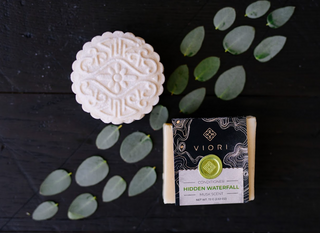Hair cleansing has been an essential part of human hygiene for centuries. From ancient civilizations to modern times, people have used various methods to keep their hair clean and healthy. In recent years, a new trend has emerged in the form of shampoo bars. In this blog post, we will take a historical journey through the evolution of hair cleansing, exploring the transition from ancient soaps to the modern convenience of shampoo bars. Join us as we delve into the fascinating world of hair care and discover the benefits of this innovative hair cleansing method.
I. Ancient Hair Cleansing Methods:
1. The Origins of Hair Cleansing:
Explore the earliest evidence of hair-cleansing practices in ancient civilizations such as Egypt, Mesopotamia, and India.
Discuss the use of natural ingredients like plant extracts, oils, and clays for hair cleansing purposes.
Highlight the cultural significance of hair cleanliness in ancient societies.
I. Ancient Hair Cleansing Methods:
1. The Origins of Hair Cleansing:
Explore the earliest evidence of hair-cleansing practices in ancient civilizations such as Egypt, Mesopotamia, and India.
Discuss the use of natural ingredients like plant extracts, oils, and clays for hair cleansing purposes.
Highlight the cultural significance of hair cleanliness in ancient societies.
2. Soap-Making in Ancient Times:
Examine the historical development of soap-making techniques in ancient civilizations.
Discuss the ingredients used in ancient soaps, such as animal fats and plant ashes.
Explore the cultural and practical uses of soap beyond hair cleansing.
Examine the historical development of soap-making techniques in ancient civilizations.
Discuss the ingredients used in ancient soaps, such as animal fats and plant ashes.
Explore the cultural and practical uses of soap beyond hair cleansing.
II. Evolution of Hair Cleansing:
1. The Industrial Revolution and the Rise of Commercial Shampoos:
1. The Rise of Shampoo Bars:
1. Environmental Benefits:
Remember to use clear subheadings and relevant keywords throughout the blog post to optimize it for search engines.
1. The Industrial Revolution and the Rise of Commercial Shampoos:
- Discuss the impact of the Industrial Revolution on the mass production of soap and shampoo.
- Explore the introduction of synthetic ingredients and chemicals in commercial shampoos.
- Highlight the shift towards convenience and marketing-driven hair care products.
- Address the environmental concerns associated with plastic packaging and waste generated by liquid shampoos.
- Discuss the carbon footprint of liquid shampoos and their contribution to pollution.
- Introduce the concept of sustainable alternatives to traditional liquid shampoos.
1. The Rise of Shampoo Bars:
- Explain the concept and benefits of shampoo bars as a sustainable and eco-friendly alternative.
- Discuss the formulation and ingredients used in shampoo bars, emphasizing their natural and nourishing properties.
- Highlight the growing popularity of shampoo bars among environmentally conscious consumers.
- Provide step-by-step instructions on how to use shampoo bars effectively.
- Include tips and tricks for lathering, massaging, and rinsing for optimal results.
- Address common concerns and misconceptions about using shampoo bars.
1. Environmental Benefits:
- Discuss the reduction of plastic waste and packaging associated with shampoo bars.
- Highlight the biodegradable nature of shampoo bars and their positive impact on the environment.
- Address the importance of supporting sustainable and ethical hair care practices.
- Explore the nourishing and moisturizing properties of natural ingredients found in shampoo bars.
- Discuss how shampoo bars can help maintain a healthy scalp and promote hair growth.
- Address specific hair concerns, such as dryness, oiliness, and dandruff, and how shampoo bars can help alleviate them.
Remember to use clear subheadings and relevant keywords throughout the blog post to optimize it for search engines.

